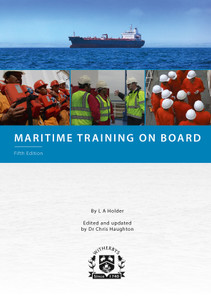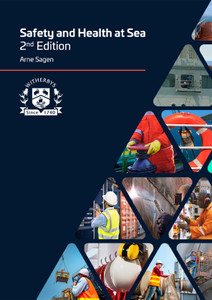
This publication looks at the requirements of the Code of Safe Practice for the Carriage of Cargoes and Persons by Offshore Supply Vessels (OSV Code). The Code covers the design, construction and operation of offshore support vessels (OSVs) that transport hazardous and noxious liquid substances in bulk for the servicing and resupplying of offshore platforms, mobile offshore drilling units and other offshore installations, including those employed in the search for and recovery of hydrocarbons from the seabed.
The OSV Code is an international standard used to avoid or reduce to a minimum the hazards that affect offshore supply vessels in their daily operation of carrying cargoes and persons to, from and between offshore installations.
This publication covers every aspect of OSV operation, including vessel design, cargo hazards, cargo transfer, venting, fire-fighting, electrical installations, operational requirements, pollution prevention and personnel safety.
The OSV Code applies the standards contained in the International Code for the Construction and Equipment of Ships Carrying Dangerous Chemicals in Bulk (IBC Code) and the International Code for the Construction and Equipment of Ships Carrying Liquefied Gases in Bulk (IGC Code) to the extent that is practicable and reasonable, taking into account the unique design features and service characteristics of OSVs.
Preamble
1 The present Code has been developed for the design, construction and operation of offshore support vessels (OSVs) which transport hazardous and noxious liquid substances in bulk for the servicing and resupplying of offshore platforms, mobile offshore drilling units and other offshore installations, including those employed in the search for and recovery of hydrocarbons from the seabed.
2 The present Code has been developed in accordance with the requirements set forth in regulation 11.2 of Annex II to the International Convention for the Prevention of Pollution from Ships, 1973, as modified by the Protocol of 1978 relating thereto (MARPOL) and in recognition of the need for standards which provide an alternative to the International Code for the Construction and Equipment of Ships Carrying Dangerous Chemicals in Bulk (IBC Code) and the International Code for the Construction and Equipment of Ships Carrying Liquefied Gases in Bulk (IGC Code) for OSVs.
3 The basic philosophy of the present Code is to apply standards contained in the IBC Code and the IGC Code to the extent that is practicable and reasonable taking into account the unique design features and service characteristics of OSVs.
4 The Guidelines for the design and construction of offshore supply vessels, 2006 (resolution MSC.235(82)), as amended, are also applicable to OSVs subject to the present Code.
5 It is recognized that the technology of the offshore industry is complex and continuously evolving, as shown by the growing need for specialized vessels such as well?stimulation vessels. To meet the needs of the industry, the present Code should not remain static. Therefore, the Organization will periodically review the Code, taking into account both experience and technical development. Amendments to the Code involving provisions for new cargoes will be circulated periodically as new cargoes are proposed for carriage and the provisions are developed.
Resolution A.1122(30)
Chapter 1 – General
1.1 Application
1.2 Definitions
1.3 Equivalents
1.4 Surveys and certification
Chapter 2 – Vessel survival capability and location of cargo tanks
2.1 General
2.2 Freeboard and stability
2.3 Non-cargo discharges below the freeboard deck
2.4 Conditions of loading
2.5 Flooding assumptions
2.6 Damage assumptions
2.7 Standard of damage
2.8 Survival requirements
2.9 Location of cargo tanks
Chapter 3 – Vessel design
3.1 Cargo segregation
3.2 Accommodation, service and machinery spaces and control stations
3.3 Access to spaces in the cargo area
Chapter 4 – Special requirements for products with a flashpoint not exceeding 60°C, toxic products and acids
4.1 General requirements for products with a flashpoint not exceeding 60°C, toxic products and acids
4.2 Products with a flashpoint not exceeding 60°C
4.3 Toxic products
4.4 Acids
Chapter 5 – Cargo containment
5.1 Definitions
5.2 Tank type requirements for individual products
Chapter 6 – Cargo transfer
6.1 Piping scantlings
6.2 Piping fabrication and joining details
6.3 Flange connections
6.4 Test requirements for piping
6.5 Piping arrangements
6.6 Cargo-transfer control systems
Chapter 7 – Cargo tank venting
7.1 General
7.2 Types of tank venting systems
7.3 Venting requirements for individual products
7.4 Cargo tank gas freeing
Chapter 8 – Electrical installations
8.1 General requirements
8.2 Electrical requirements for individual products
Chapter 9 – Fire-fighting requirements
9.1 Application
9.2 Cargo pump-rooms
9.3 Protection of the cargo area
9.4 Special requirements
9.5 Inert gas production on board
Chapter 10 – Mechanical ventilation in the cargo area
10.1 Definitions
10.2 General requirements
10.3 Spaces not normally entered
Chapter 11 – Instrumentation and automation systems
11.1 General
11.2 Level indicators for cargo tanks
11.3 Overflow control
11.4 Vapour detection
Chapter 12 – Pollution prevention requirements
Chapter 13 – Life-saving appliances and arrangements
Chapter 14 – Personnel protection
14.1 Protective equipment
14.2 First-aid equipment
14.3 Safety equipment
14.4 Emergency equipment
Chapter 15 – Operational requirements
15.1 General
15.2 Cargo information
15.3 Personnel training
15.4 Opening of and entry into cargo tanks
15.5 Simultaneous carriage of deck cargo and products
Chapter 16 – Backloading of contaminated bulk liquids
16.1 Preamble
16.2 General
16.3 Documentation
16.4 Operation
Chapter 17 – Discharging and loading of portable tanks on board
17.1 Preamble
17.2 General
17.3 Independent tanks
17.4 Shipment of cargo in portable tanks used as deck tanks
Chapter 18 – Carriage of liquefied gases
18.1 General requirements
18.2 Accommodation, service and machinery spaces and control stations
18.3 Cargo containment
18.4 Materials of construction
18.5 Vent system for cargo containment
18.6 Cargo transfer
18.7 Vapour detection
18.8 Gauging and level detection
18.9 Emergency shutdown system
18.10 Personnel protection
18.11 Carriage on open deck
18.12 Carriage of other liquefied gases listed in chapter 19 of the IGC Code
Appendices
Appendix 1: Model form of Certificate of Fitness
Appendix 2: Guidelines for testing prior to backloading
Appendix 3: Model format for the procedure for discharging and loading portable tanks containing dangerous goods carried as deck tanks on offshore support vessels
As a specialised agency of the United Nations, the International Maritime Organization (IMO) is the global standard-setting authority for the safety, security and environmental performance of international shipping. Its main role is to create a regulatory framework for the shipping industry that is fair and effective, universally adopted and universally implemented.
In other words, its role is to create a level playing-field so that ship operators cannot address their financial issues by simply cutting corners and compromising on safety, security and environmental performance. This approach also encourages innovation and efficiency.
Shipping is a truly international industry, and it can only operate effectively if the regulations and standards are themselves agreed, adopted and implemented on an international basis. And IMO is the forum at which this process takes place.
- Number of Pages:
- 25
- Published Date:
- January 2000
- Book Height:
- 210 mm
- Book Width:
- 146 mm
- Author:
International Maritime Organization
- Preview:
- Yes
- ISBN:
- 9789280160864
- Binding Format:
- Paperback
- Publication Date:
- January 2000






